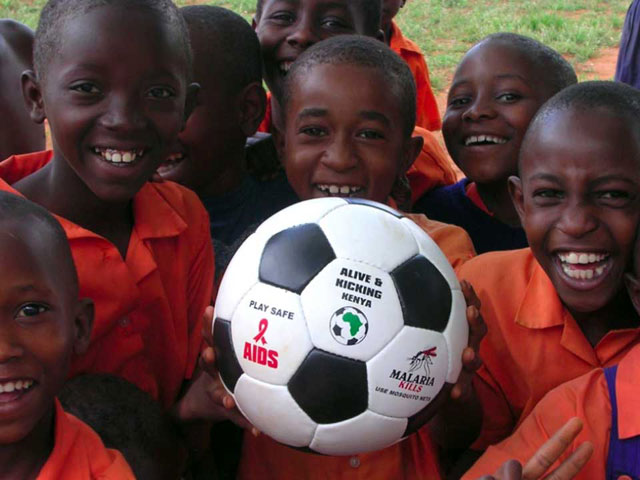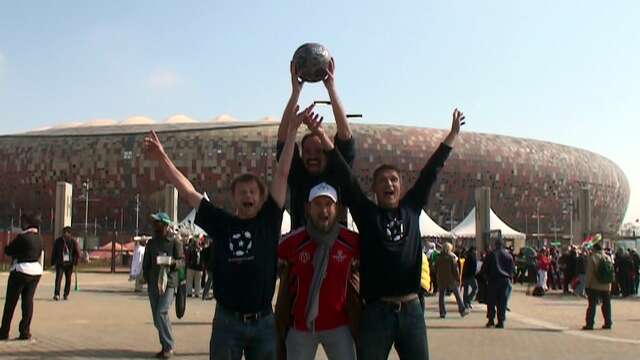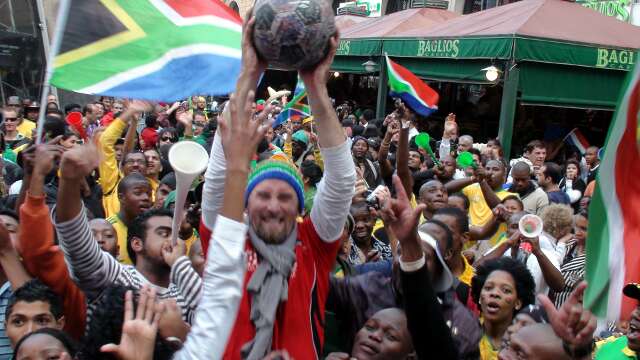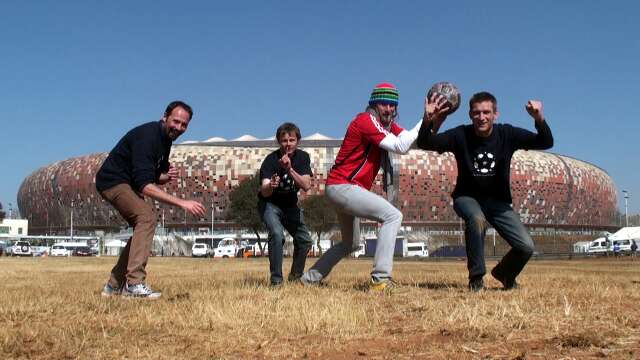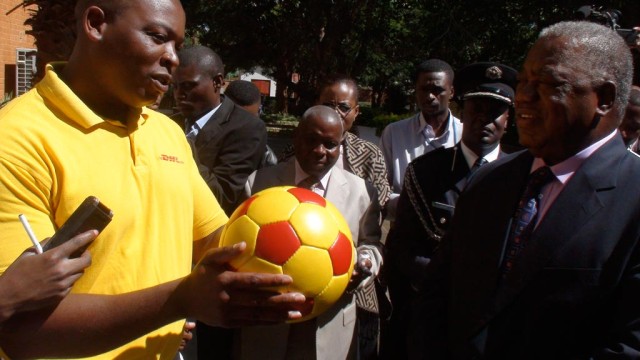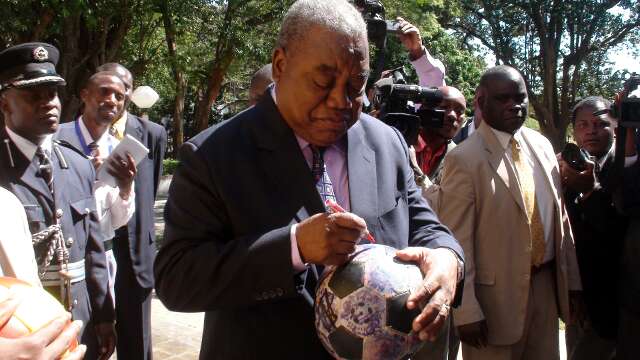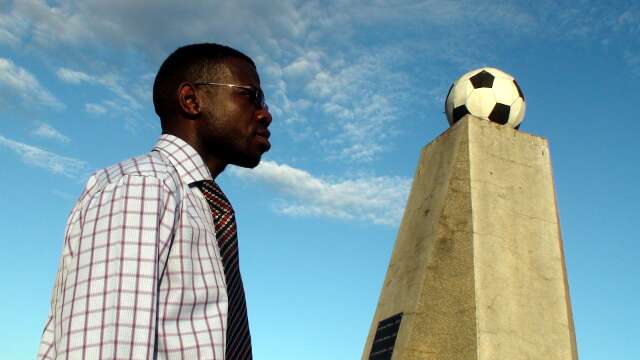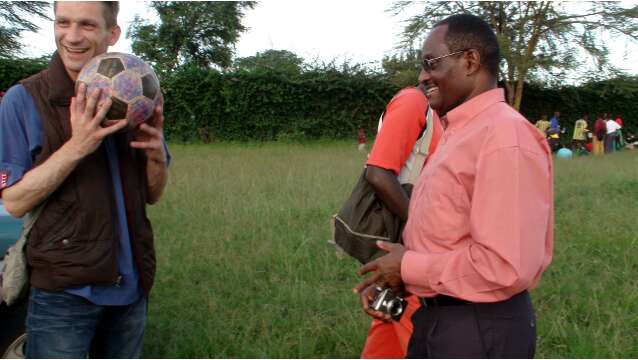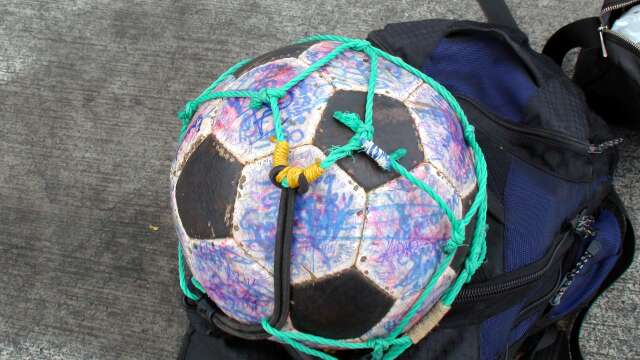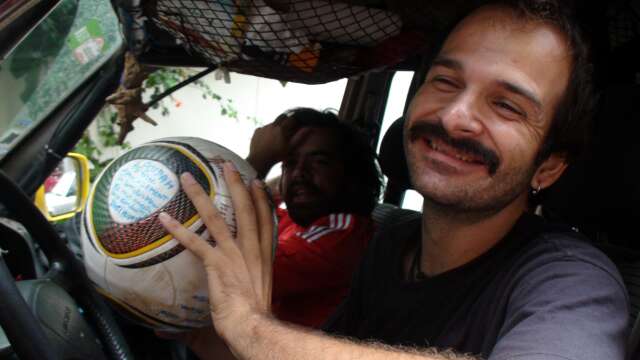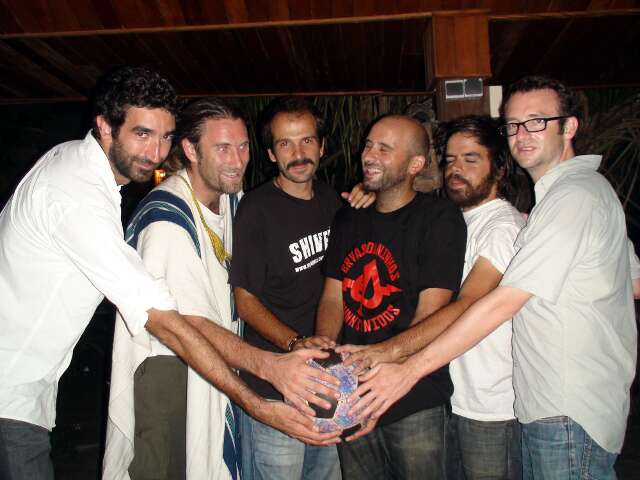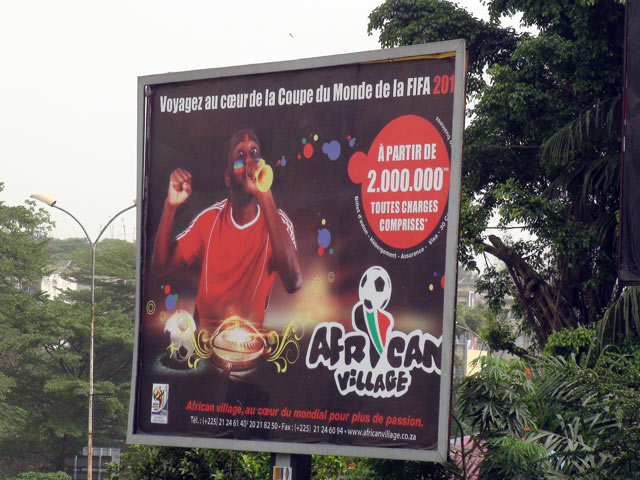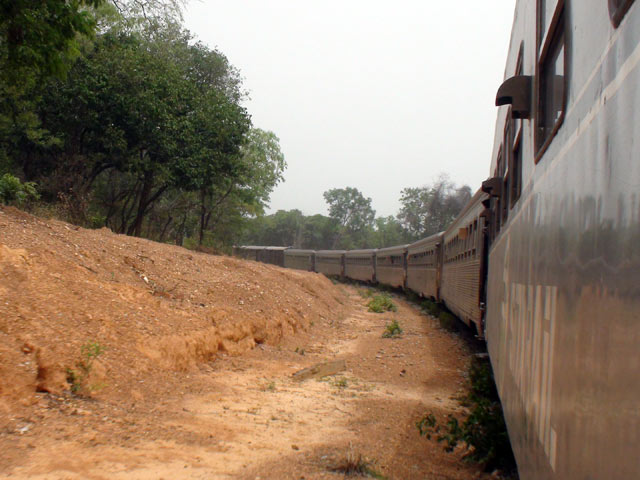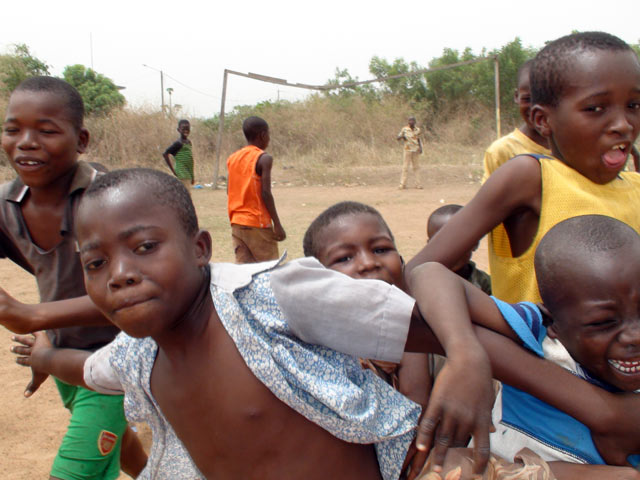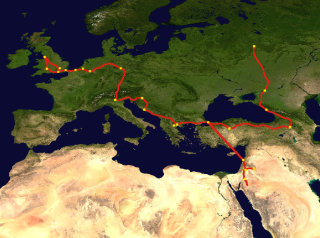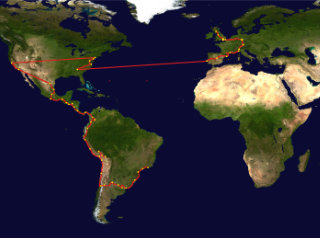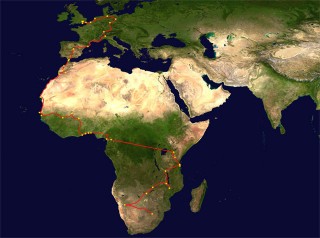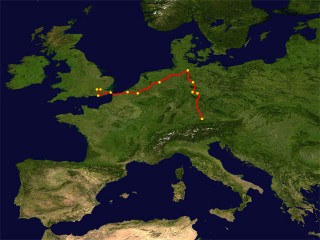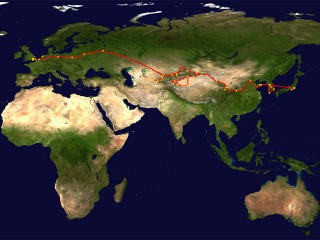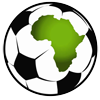“It is here. Feel it. Touch it. It is here.” Says a Bafana, Bafana grandmother as she meets The Ball and welcome us to the World Cup.
The Ball has arrived at Soccer City, just hours before the World Cup Opening Ceremony. We kick The Ball to the stadium. We juggle The Ball with fans from around the world with the stadium behind us and the roar of hundreds of Vuvuzelas all around.
We call out “One Ball” and a crowd reponds in unison “One World”…
Then a Mexican fan takes charge… “When I say Una pelota everyone replies Un mundo… Una pelota… un mundo… Una pelota… un mundo…”. The crowd gathered is dancing. The Ball is held aloft and celebrated.
Next up is a French fan: “Une balle. Un monde”…
Finally a German fan: “Ein Ball. Eine Welt”…
Phil and Christian stand either side of Andrew, arms interlocked. Richard is up on Andrew’s shoulders. Christian and Phil pass The Ball to Richard. Richard lifts The Ball up in the air in front of Soccer City.
The Ball’s epic journey is over.
There are 32 teams represented at the World Cup. 32 panels on The Ball. 32 countries The Ball has visited in the past 138 days. Over 17,000 people have kicked or headed and signed The Ball.
With an African ball, we have learned that this is Africa’s World Cup. We’ve seen that people on this continent are generous, friendly and full of life. We’ve come to care passionately about Special Olympics’ and the fantastic work that organisation is doing across Africa.
It doesn’t matter if you are black, white, orange or red…. it doesn’t matter if you are old or young…. nor if you are male or female…. it doesn’t matter if you are good at football or not and it certainly doesn’t matter whether or not you have an intellectual disability… The Ball is for everyone…
One Ball. One World.
“We are very happy that young people thought of this idea of taking The Ball around Africa. It makes us all feel part of the game. Today was the worst day you could have come to State House. We have cancelled all of the things before and after your visit. All of my ministers are here with many things to do. But we thought that it was so important, that we must attend to this.”
— Rupiah Banda, President of Zambia
Back in Libreville in April, Andrew and The Ball took off on a DHL cargo flight headed for Douala, Cameroon. On the 28th of April 1993 another flight took off from that very airport carrying the greatest ever Zambian football team. The plane crashed and everyone on board perished. Today, we remember those fallen heroes as we visit the memorial to them at Independence Stadium in Lusaka. We pay our respects and find out more about what happened.
After refuelling successfully in Gabon the plane took off. What happened next has laid the foundations for many a conspiracy theory. A fisherman reported a huge explosion and saw the plane go down. This man was the only eyewitness and within a week he was dead. His death raised the bar, the Zambian people wanted to know what really happened. Because it was a military aircraft, there was no black-box on board and no way to find out the reason for the crash without the help of Gabon’s Government, and this has not been forthcoming.
The version that is most popular today is that one engine caught fire, the pilot made a mistake in shutting down the good engine instead and the plane crashed. But we still do not know exactly what happened.
What we do know is that players, coaches, administrators, and journalists were all on board. Their remains were brought home and buried right here outside of the national stadium. The monument here, and the graves of the fallen, are a shrine. The Zambians still mourn the loss of those heroes. They still come here, 17 years on, to pay respect to the dead, and they still sing songs about those players at every home match in Independence Stadium. And they still wonder what might have been.
Today, we mourn those players as the sun goes down. Then, together with emotional Zambian football officials, we enter Independence Stadium, accompanied by twenty barefoot kids. Accompanied by a national team striker, we kick The Ball on the pitch. The ear to ear smiles on the faces of the youngsters brighten up the atmosphere. They are living the dream…
“Normally this pitch if reserved for the professionals and the national team. We are making an exception today for you and The Ball.”
England, Somerset, Radstock, Tuesday evening. I walk downstairs after settling my son, Alistair, in his bed for the night. I have resigned myself to my scheduled flight to Kenya being cancelled indefinitely by the intervention of the Icelandic volcano. The TV is showing the news. My attention is suddenly grabbed. Flights are back on — and mine appears to be one of them. With a start, I realise that I might just have put my son to bed for the last time until July.
Ah, the romance of air travel… where did it go? Come to think of it, did it ever exist? As usual, it’s a case of a few hours of fitful sleep, stopovers and sharing personal space with strangers, customs and immigration officials alike. Finally, touchdown in Nairobi. But luggage delays prevent me from joining Andrew at Alive & Kicking to meet Bernard, the maker of The Ball.
And so Joe Karanga, who meets me at the airport (and has patiently waited for me to emerge with my luggage) whisks me off to a project where Andrew and The Ball are rumoured to be waiting for me. And indeed they are. I haven’t seen Andrew since we parted ways in Casablanca. Then in the distance, there he is, camera in hand, and I break out into a spontaneous “ole ole ole”. Reunited for the final leg through East Africa to the World Cup.
But where is The Ball? Ah, there it is. Or is it? This one looks distinctly worse for wear and is, strangely, a weirdly misshapen.
Andrew explains that many thousands have signed it since I last saw it and that it has just been repaired, two new panels fitted which are smaller than the existing ones, giving it its, ahem, unique shape. Some keepie-uppie immediately reassures me that this is indeed no just any ball — it is The Ball.
It’s time to leave West Africa. Goodbye, it’s been fun. Thousands of miles are behind us, hundreds of games of football have been played and The Ball is covered in signatures. From 40 degree plus scorching heat in Kayes to the sweat-fest of the Atlantic coast, from police escorts to police road blocks, from fresh fish and rice to barbequed cow on street corners, from Isle de Gore to Cape Coast, from the Voodoo Pope to the Gospel church, from Hearts of Oak Accra to Search and Groom Nigeria, massive train rides, DHL cargo flights… ahhhh West Africa has been a blast.
As I proceed through customs, they stamp and sign The Ball but tell me that the The Ball needs to be deflated for the flight to Ethiopia and the onward connection to Nairobi, Kenya. I am told it would be a safety risk otherwise. The flat Ball is stored in a net on my backpack. It is the same net that was used to carry The Ball to the World Cup in 2002. Back then, the net and The Ball 2002 were permanently attached to Phil’s backpack.
At the airport in Addis Ababa I just happen to bump into the Ethiopian Under 17 National Team. I invite them to kick and sign The Ball which they are more than happy to do. Then we are off to Kenya. East Africa is beckoning and I am excited to be joined by another player. Christian is back on The Ball. The last time we saw each other was in Casablanca.
Of all The Balls in all the world this one will bounce back into his path sooner or later.
I’m sitting in the internet cafe at the German Seaman’s Mission, our accommodation in steamy Douala. It is the last night for The Ball in Cameroon. As I frantically type an e-mail and organise the next leg of the mission, I hear someone utter the name Roger Milla. I swing around and see a southern European gentleman, unshaven, sporting what looks like a 1970’s porn star moustache, talking to two others. Our eyes meet. Do we know each other?
Back in Casablanca in February, Nicole Matuska had told Christian and me about a group of Portuguese journalists who were also on a trip to the World Cup. Phil and I heard more about them from a young Portuguese lady one boozy evening in Ouagadougou. A week later in Abidjan, at a visit to the famous football academy of ASEC Mimosas, they came up once again. It seems inevitable that our paths would cross.
“Are you from Portugal?” I ask. “Yes,” comes the response. “Are you going to the World Cup?”, “Yes” again. “Roger Milla is not in Yaounde,” I say. A knowing look — You must be from Spirit of Football.” It turns out that we know about them and they know about The Ball. And, what’s more, there are three French guys on another journey to the World Cup who are also in town. It’s going to be a World Cup trip dinner tonight.
The Portuguese journey started in Lisbon on the 9th of January. They have been on the road the longest. We kicked-off our journey on January 24th in London. And the French trip, which is sponsored by TV Channel Voyager (France’s answer to the Discovery Channel) began on the 6th of February in Paris.
The Portuguese are die-hard Benfica fans. I take great pleasure in taunting them about Liverpool (my team) having knocked Benfica out of the Europe League a few weeks ago. They talk about their emotional goodbye from friends and loved ones in Lisbon — it sounded dramatic. The final goodbye from hysteric, wailing mothers expecting never to see their children again — Africa would be the end of them, they thought.
The French duo’s farewell was not quite as emotional. They are an interesting pair. One of them is a football fan. The other hates football but loves Africa. Their story is one of anti-football and pro-football contrasted against an African backdrop. “Are you falling in love with football” I ask the non believer. “Not really” comes the reply, “but I can understand it more.” “Are you falling in love with Africa” I ask the other, “Yes,” the emphatic answer. The love of Africa and of travel and mostly of football is what brings us all together. Sharing common themes through very different experiences.
We talk about life on the road in Africa, the ups and downs, the near misses, the pressures of reporting the journey. We go our separate ways, but not before making optimistic plans to meet up again with the Portuguese in Zambia, the French in Namibia and the Portuguese again in Johannesburg on the eve of the Opening Ceremony.
All roads here lead to the World Cup.
Didier Drogba is wildly popular in Côte d’Ivoire. Every second child wears a Drogba Chelsea or Côte d’Ivoire replica shirt. There is even a beer named after him. But for all of his fame and talent (and those of the other highly skilled bunch of Ivoirians who are plying their trade at top teams all over Europe) the people of Côte d’Ivoire are not expecting World Cup success.
Ivoirians are quick to play down their team’s chances of success at World Cup 2010.
“They are too big for their own boots.”
“They are not playing with their hearts when they play for Côte d’Ivoire, they are more concerned about making money for their clubs.”
“We are in the group of death, Portugal have Ronaldo and other top players we cannot compete with them and Brazil is Brazil, they are just too good. We couldn’t even reach the semi finals of the African Nations championships.”
It is hard to argue with some of that logic.
But it seems that underneath their modesty, Ivoirians are quietly confident that their national team can go far in the World Cup. My thinking is that it all comes down to that first game against Portugal. Côte d’Ivoire’s players need to restore their confidence. If Côte d’Ivoire wins that first game — and they most certainly can — then they could go very far, maybe even all the way. Wouldn’t it be great if an African team were to win Africa’s first ever FIFA World Cup?
Abidjan, the capital of the Côte d’Ivoire, is a lively place and the most western looking of any African city that we’ve visited so far. The skyline is dominated by skyscrapers and there are roads without too many potholes. Football advertising boards have been a regular thing in West Africa but not quite as much as in Abidjan.
Everywhere you look you can see the big telecommunications companies MTN and Orange slogging it out. MTN is an official sponsor of the FIFA World Cup and they are flaunting that fact. But Orange is the clear winner here. Côte d’Ivoire’s Elephants play in an all orange kit and the huge billboards with players and fans dressed in orange are impossible to miss. They are especially effective since everyone’s focus is turning to the World Cup now.
Ouagadougou — Abidjan. What a ride, 1,180km of searing heat in 46 hours… and a seat for The Ball. This single track giant of a line, dating back to 1905, is carrying The Ball, Phil and me from the heart of Burkina Faso to the tropical Côte d’Ivoire.
We were told “don’t go to Côte d’Ivoire, it is far too dangerous”, “watch your back there, there are thieves everywhere.” “Don’t trust anyone”. “Watch the political situation. It is a volatile one. ” “It is getting ready to erupt there” said a French pilot we met in Mali, “the people want elections, they have been waiting for many years. The government cannot hold out much longer. It will go off there in the next month.” I am particularly worried about this leg of the journey.
There was a civil war here recently and our train is taking us through the heart of former rebel territory and its capital Bouake. I am also paranoid that our video camera might get confiscated. The train line is one of national security and monitored by the gendarmerie. But trying to prevent Phil from recording is a tough job for anyone at the best of times. He is also hoping to climb onto the roof of the train to film from above.
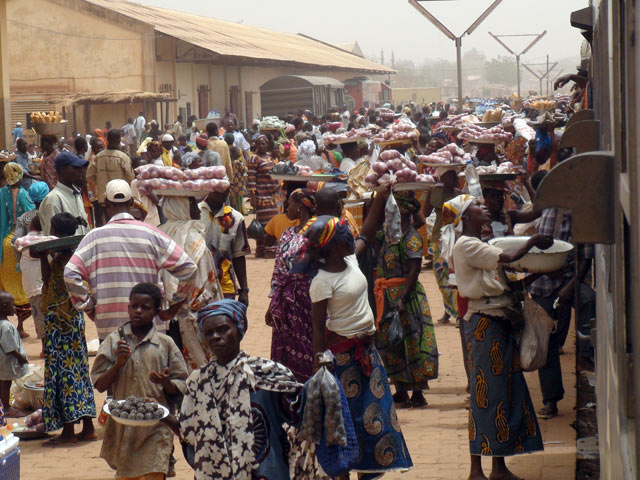 A typically active stop off in Bobo Dioulasso, the last big town in Burkina Faso before we head into Côte d’Ivoire.
A typically active stop off in Bobo Dioulasso, the last big town in Burkina Faso before we head into Côte d’Ivoire.Many people warned me about travelling through Africa. Friends and family alike have grave concerns for our safety. They think we are mad. “Yes, there are problems in Africa. But there are problems everywhere,” said the Burkinabe Minister for Sport a few days ago. “If a bomb goes off in Marseille,” he continued, “France is still okay. If a bomb goes off in Nigeria, it is Africa and it is a big problem.”
Phil is much more relaxed about the whole situation. I worry when we can’t get a hold of Charles who is due to pick us up at the end of this gruelling ride… our mobile is not working. Phil chills. I’ve heard that bandits operate on the train which should arrive in 2 days time, if there aren’t any unforeseen technical problems. Phil continues to chill. I’m quietly looking forward to seeing the back of Cote d’Ivoire and I haven’t even set foot in it yet. The prospect of Ghana and visiting my friend Kweku is very appealing.
As the train rolls onwards, we start getting to know some of our Ivorian and Burkinabe neighbours. We drink beer with them, share food with them and joke with them. We have plenty of time to contemplate this roller coaster of a trip to the World Cup, endure some rigours of sub-Saharan long distance travel and open up The Ball’s Côte d’Ivoire adventure with a lightning-quick game on a station-side pitch.
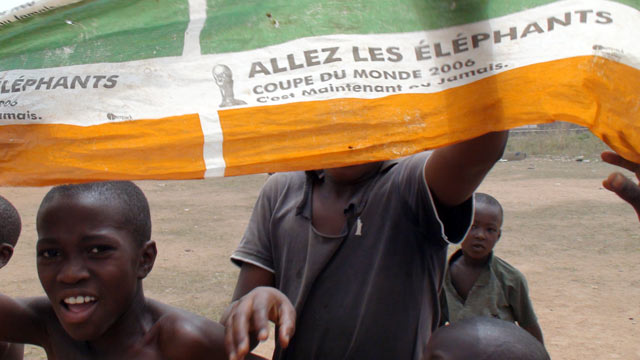 …and our first sight of the Ivory Coast national team: Allez les elephants! Soon to play in the World’s greatest competition.
…and our first sight of the Ivory Coast national team: Allez les elephants! Soon to play in the World’s greatest competition.As we cross into Côte d’Ivoire, almost a whole day into our journey, I have no more fears. I am excited to visit Abidjan and slightly embarrassed about my paranoia and very tired from this long, exhausting train ride. Onward.

